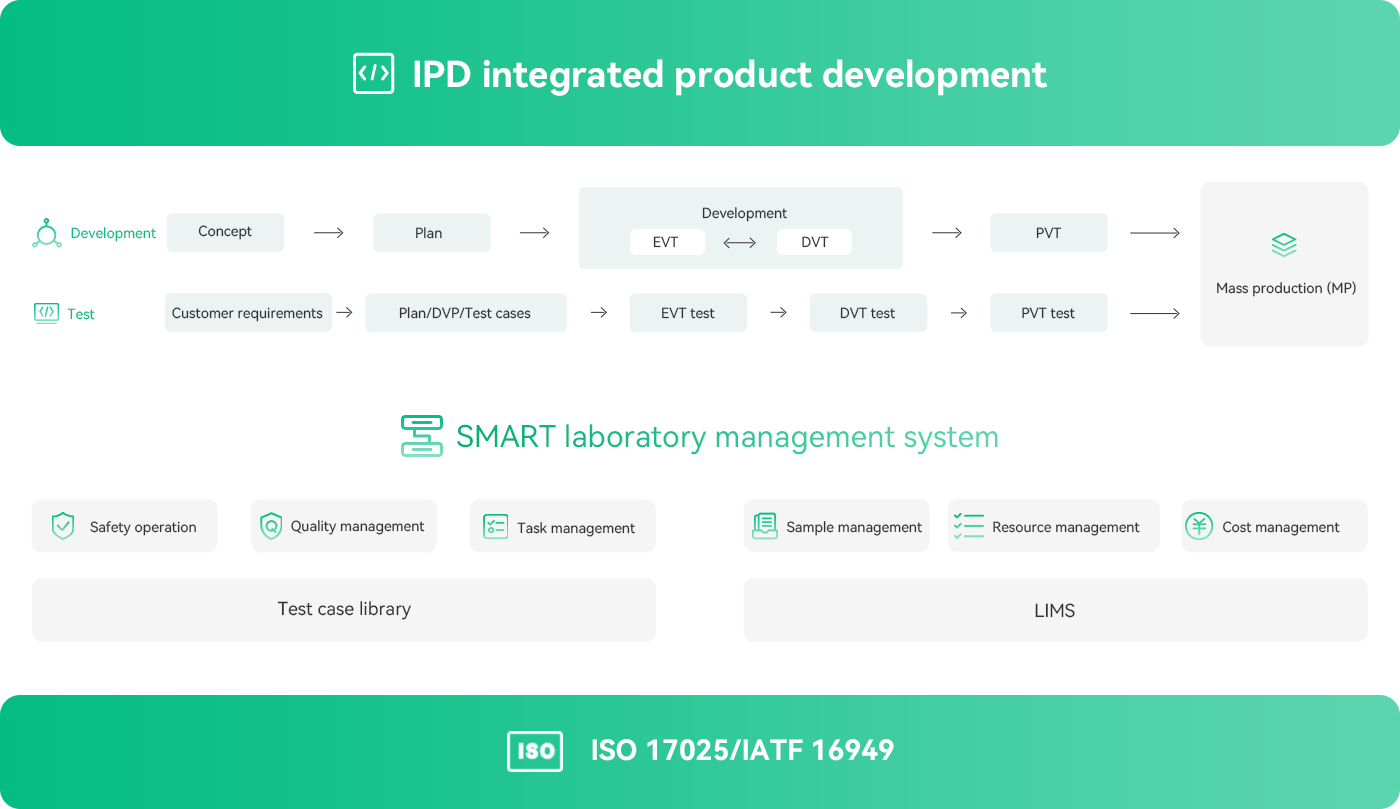Business Products
Consumer Products
Technological Innovation
It covers standardization/product certification, battery function, performance, safety and reliability design/analysis to provide the ultimate solutions on quality, safety and reliability for Ampace customers.
It is equipped with advanced instruments and methodologies that support the testing validation, and characterization of raw materials, components, battery cell, battery module, and battery pack as well as application systems. The lab has been certified with CNAS/ISO17025 and IATF16949 standards.
The battery reliability analysis/prediction is carried out by breaking down the system into sub-systems (electro-chemical, electrical/electronic, and mechanical), and then to key components. The reliability life prediction is achieved by in-depth analysis of failure mechanisms at the key component level together with the life prediction algorithm and accelerated aging tests.
Product safety is Ampace’s core competence. Zero safety incident in the market is our ultimate target. This is achieved thru the effective identification of product safety risks in early stages of product development, and the development and implementation of ultimate safety technologies before product launch into market.
Ensure Ampace product solutions meet the standard and certification requirements of various regions, participate and lead the development of industry standards at national and international levels
Embedded in the integrated product development process (IPD),efficient validation for a closed loop of the test plan and the smooth delivery of the project.

Precise analysis of customer needs, with the V-model concept to develop a comprehensive coverage of "system → subsystem → component" test verification program.

Achieve the high efficiency or low cost through the test path optimization and automation technology.

Provide agile and responsive service through one-stop solution on testing related technical requirements, in-process analysis, and equipment resources.

Build a holistic test plan by including detailed customer requirements + FMEA analysis + application scenario + failure from similar products in the past. There are 3000+ test cases among different stages of testing (white/black/gray-box test), in a tempt to achieve 100% coverage of all possible cases.
Multi-level BMS testing technology
Wireless/Web/App testing technology
Development of Hil and MiL testing technology

A highly automated testing system has being established through the development of the three major platforms: embedded HW/SW design, C# automation, and Python test data management.
Customer made BMS tester
Smart BMS tester for mass production testing
One-click automated test platform

Developed a quantitative analysis and prediction for Ampace products through a five-step method (or DIMOV)
Reliability model development and prediction
System-level warranty analysis and strategy
Data analysis and prediction based on field data

A safety analysis and design of full life cycle is achieved by using systematic safety analysis methods including environmental profile analysis, FMEA, CTS/CTR, FTA, 5A, etc.
Safety risk analysis and quantification
In depth study of failure mechanism
Development of safety specification and standards



Highly safe and stable materials
Stringent process control for particles

24h real-time status monitoring
Warning for safety event

Inhibit the spread of thermal runaway,
Avoiding combustion
Li—ion battery is a complex system, and its reliability target should be set for each sub-system
The battery system can be broken down to subsystems of electrical/electronic, mechanical, and electrochemical

Evaluate the reliability of EE parts in series tests considering multi-factors (such as voltage, current, temperature, humidity et al) in the typical environments that simulate the actual degradation process of BMS.

Based on the principle of fatigue damage equivalent, convert the measured road spectrum load into PSD conversion acceleration, and evaluate the mechanical reliability of the product by simulating the actual working conditions using a vibration table.

Based on the mechanisms of cyclic and storage degradation, establish a capacity degradation attenuation model according to the principle of cumulative damage, and combine it with actual usage conditions to achieve quantitative assessment of the product’s lifespan.
Standards and certifications